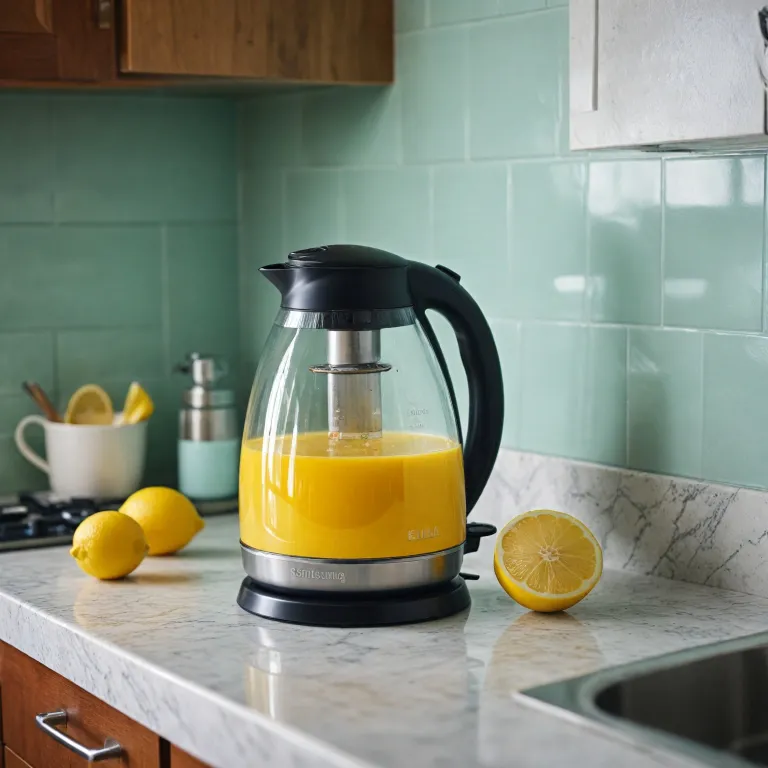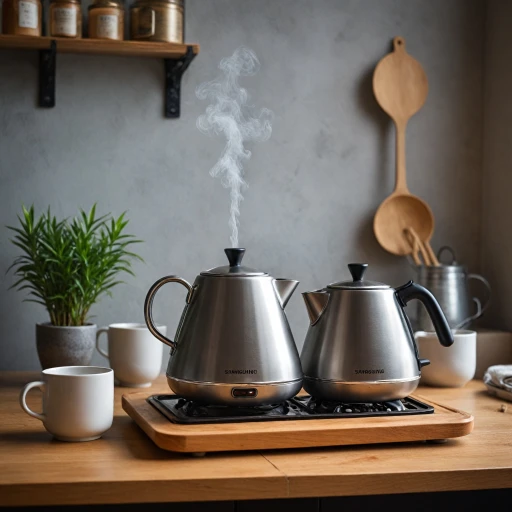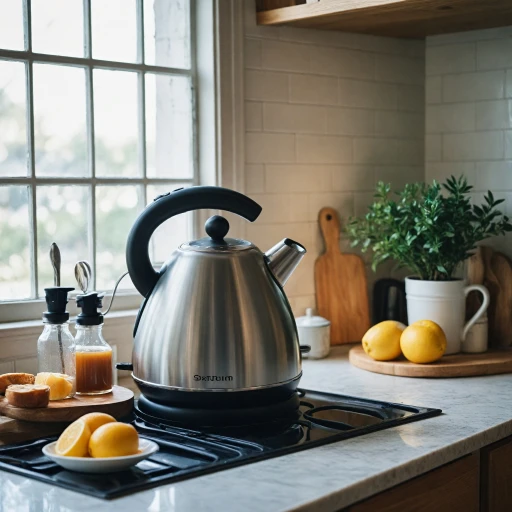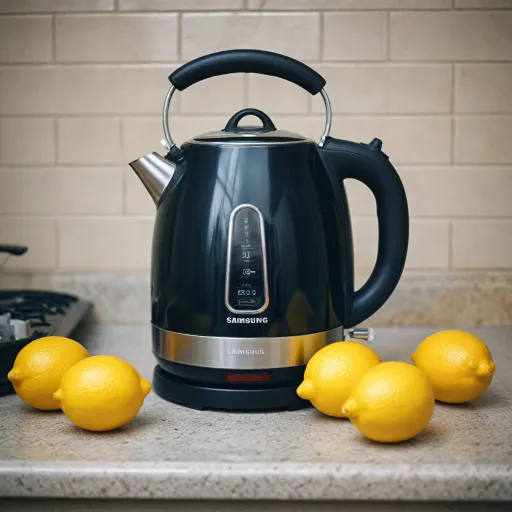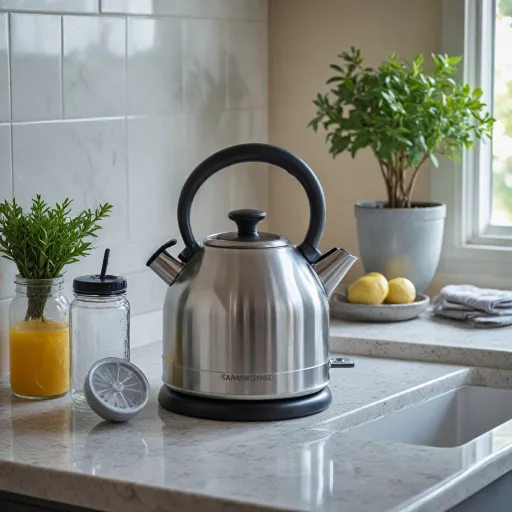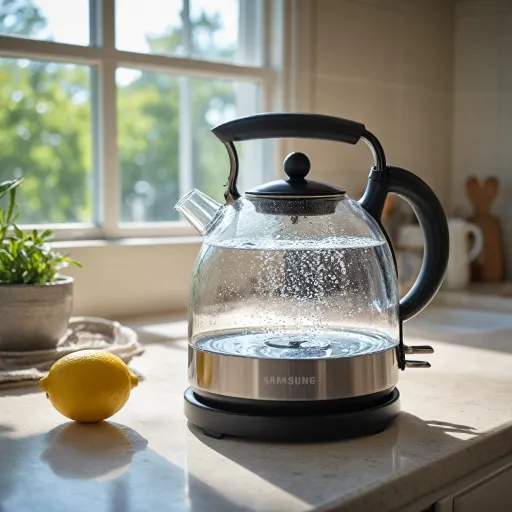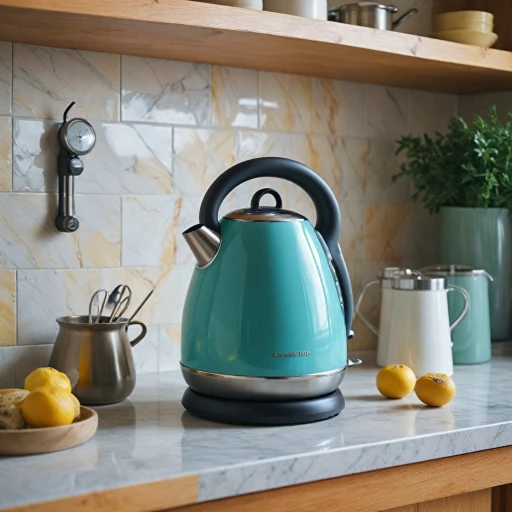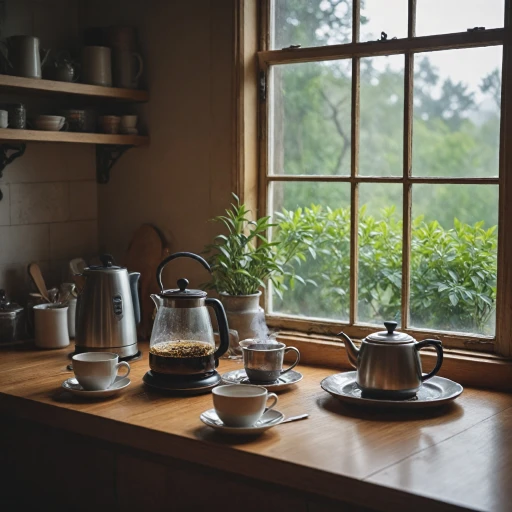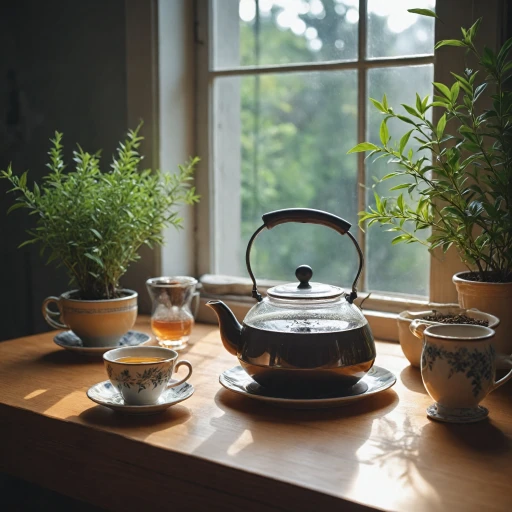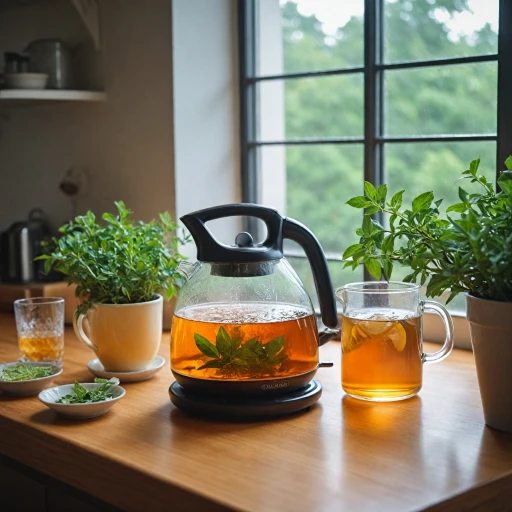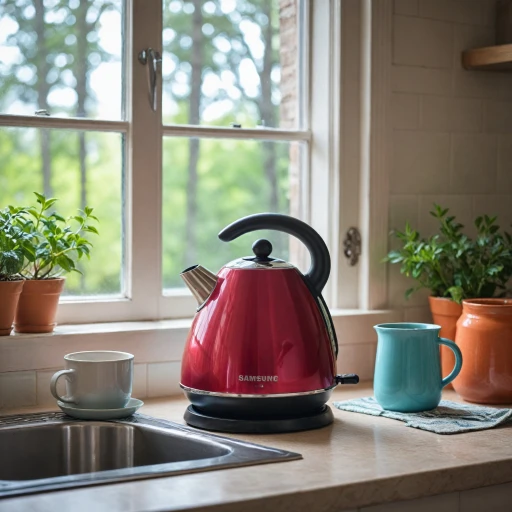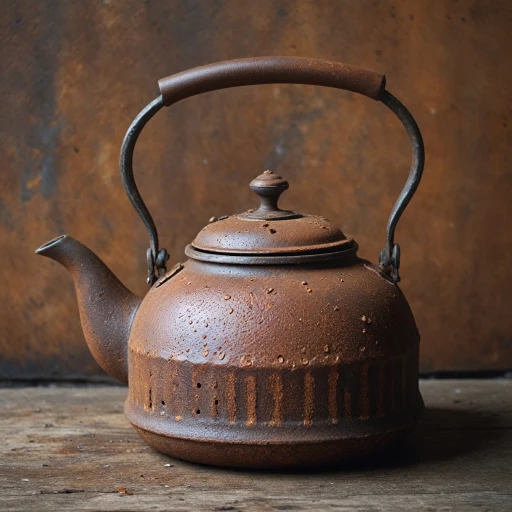
Understanding Limescale and Its Impact
What is Limescale and How Does it Affect Your Electric Kettle?
Limescale might not be a term you think about daily, but if you own an electric kettle, it's an important concept to understand. This chalky white substance tends to accumulate inside your kettle over time, primarily when using hard water. Hard water contains high levels of minerals like calcium and magnesium, which deposit as limescale upon heating. While it might seem harmless, limescale buildup can impact the efficiency and lifespan of your electric kettle. Not only does it direct affect the heating element inside kettle, reducing its effectiveness at boiling water, but it can also influence the taste of your drinks, making your tea or coffee less enjoyable both in flavor and quality. Left unaddressed, limescale can also lead to more energy being used during each water boil, driving up electricity costs as the kettle works harder to heat water. Moreover, the sight of limescale is far from pleasing, making your once shiny kitchen appliance look aged and less than best. The good news is, recognizing the signs of limescale buildup is straightforward. From the characteristic white spots inside the kettle to longer boiling times, early identification allows for effective treatment using natural methods like vinegar or commercial solutions. Regular cleaning is key to maintaining your kettle's top performance and preventing future buildup, ensuring a good experience every time you brew a cup of tea or coffee.Signs Your Kettle Needs Descaling
Indications It's Time to Pay Attention to Your Kettle
Electric kettles are a staple in many kitchens, providing a quick way to bring water to a boil for tea, coffee, and more. However, the gradual buildup of limescale due to hard water can impact their efficiency and even longevity. To ensure your kettle from the better time-spent in your kitchen, it's important to recognize the signs that indicate it needs descaling.
One of the most obvious signs of limescale buildup is the white, chalky residue found inside the kettle. This residue often appears on the heating element and the walls of the kettle, making your once spotless kitchen appliance look unkempt. Curiously, this buildup can even affect the taste of the water, impacting your tea or coffee enjoyment with an unpleasant flavor profile.
If you're noticing that it takes longer than usual for your electric kettle to bring water to a boil, you're likely dealing with significant limescale accumulation. Limescale is a poor conductor of heat, which means water boiling processes become less efficient. This not only wastes energy but can also eat into your valuable time, especially in the morning rush.
Another less obvious sign to watch out for is unusual noises during boiling. An electric kettle that struggles to heat water due to blockages or compromised heating surfaces may emit louder sounds than usual. These unusual noises can be an indication of it needing a good cleaning.
Pay close attention to the exterior and handle of your kettle as well. A too-hot-to-touch handle or exterior can be a result of thermal mismanagement caused by limescale buildup, which traps heat in unwanted places.
To keep your electric kettle in top condition and avoid these inconveniences, be proactive with descaling using natural methods or commercial solutions. Regular maintenance not only saves energy but extends the life of your appliance, ensuring every cup of tea or coffee is perfect. Once you recognize these signs, you're better equipped to address the issue before it escalates, as discussed in the sections on natural methods and preventative measures.
Natural Methods for Limescale Removal
Harnessing Natural Solutions for a Spotless Kettle
Natural methods can effectively tackle limescale buildup inside your kettle, using simple ingredients found in your kitchen. These methods are not only environmentally friendly but also economical.- White Vinegar: Start by filling your electric kettle halfway with a mixture of white vinegar and water (1:1 ratio). Let it soak for an hour to help dissolve stubborn limescale. After soaking, boil the solution and then let it cool. Pour out the mixture, and rinse the kettle thoroughly with fresh water to remove any vinegar residue.
- Lemon Juice: Lemon juice is another good acid for combating limescale. Fill your kettle with lemon juice and water in equal parts. Allow it to sit for at least an hour, then boil the mixture. Once the solution has cooled, discard it and ensure to rinse the kettle well.
- Baking Soda: This method uses a combination of baking soda, which is a mild abrasive and can help clean your electric kettle. Mix one tablespoon of baking soda with a full kettle of water. Boil this mixture and let it sit for 20 minutes. Afterward, rinse the kettle thoroughly to prevent any baking soda taste from lingering.
- Citric Acid: Found in many citrus fruits, citric acid is excellent for removing limescale. Dissolve a tablespoon of citric acid in water inside your kettle. Let it sit for 15-20 minutes, then proceed to boil the water. Afterward, rinse your kettle thoroughly.
Commercial Descaling Solutions
Commercial Solutions for Effective Descaling
While natural methods provide a do-it-yourself approach to descale your electric kettle, sometimes commercial descaling agents offer a more efficient solution. These products are specially formulated to tackle the stubborn limescale, ensuring your appliance stays in prime condition.- Specialized Descaler Products: Available in various formulations, these are designed specifically for appliances like kettles. They contain active ingredients that break down limescale deposits effectively. Always follow the manufacturer’s instructions for the best results.
- White Vinegar-Based Cleaners: Some commercial products leverage the acidity of white vinegar to dissolve limescale. These solutions may come in convenient liquid or spray form and are particularly effective in treating difficult buildup inside the kettle.
- Citric Acid Solutions: Citric acid is another powerful descaling agent often found in commercial products. In previous sections, we discussed using household ingredients, and citric acid-based solutions can offer a more concentrated approach to tackling buildup.
Preventing Limescale Buildup
Strategies to Keep Limescale at Bay
One of the most effective ways to prevent the hassle of buildup in your electric kettle is by understanding the root cause—hard water. Addressing this can significantly prolong the life of your appliance and ensure the best taste for your tea and coffee.- Regular Rinsing: After each use, a good practice is to rinse the inside of your kettle with fresh water. This helps in removing any minerals deposited during boiling.
- Water Choice: Where possible, use filtered or bottled water, which often contains fewer minerals than tap water, thus reducing limescale formation.
- White Vinegar Rinse: Regularly cleaning your kettle with white vinegar is another measure. Fill the kettle halfway with a mix of equal parts water and vinegar, boil, and let it sit before rinsing out. This not only helps in cleaning but also in removing minor acid-based limescale traces.
- Adding Soluble Barriers: Consider adding a little baking soda to the boiling water occasionally. It's known for its balancing alkaline properties, which can mitigate the effects of acidic build-up from frequent use.
- Routine Descale: Regularly descale your electric kettle using vinegar or commercial solutions to prevent stubborn buildup from surfacing over time. These are good sources for tackling even the most stubborn build-up situations.
- Dust Protection: Remember to keep your kettle cover on when not in use. This prevents dust from settling inside the kettle, which can combine with moisture to form limescale.
Maintaining Your Electric Kettle for Longevity
Regular Cleaning Practices
To ensure your electric kettle remains in top condition, regular cleaning is essential. After each use, rinse the inside of the kettle with water to remove any residual tea or coffee stains. This simple step helps prevent limescale buildup and keeps your kettle looking white and clean.
Descale Periodically
Even with regular cleaning, limescale can still accumulate, especially if you have hard water. It's important to descale your kettle periodically. Using natural methods like white vinegar or lemon juice can be effective. Fill the kettle with a mixture of water and your chosen acid, let it sit, then boil the water. This process helps remove limescale and keeps your kettle functioning efficiently.
Use a Soft Cloth
When cleaning the exterior of your electric kettle, use a soft cloth to avoid scratching the surface. Wipe down the kettle regularly to remove any dust or spills from your kitchen. This not only maintains the kettle's appearance but also extends its lifespan.
Monitor Water Levels
Overfilling your kettle can lead to water spilling over, which might cause damage or increase the risk of limescale buildup. Always fill the kettle to the recommended level to ensure safe and efficient boiling.
Store Properly
When not in use, store your electric kettle in a dry place. Keeping it away from moisture helps prevent rust and other potential damage. A well-maintained kettle is always ready for your next cup of tea or coffee.
